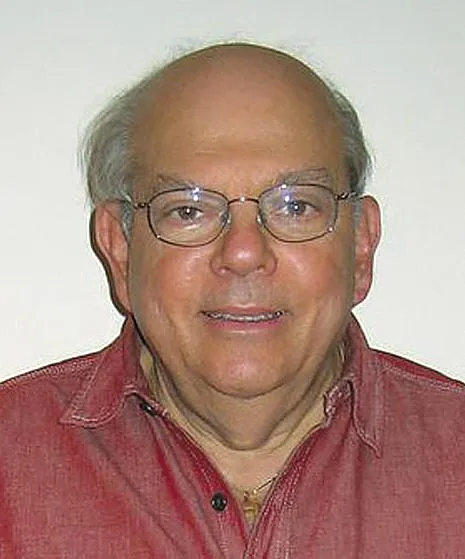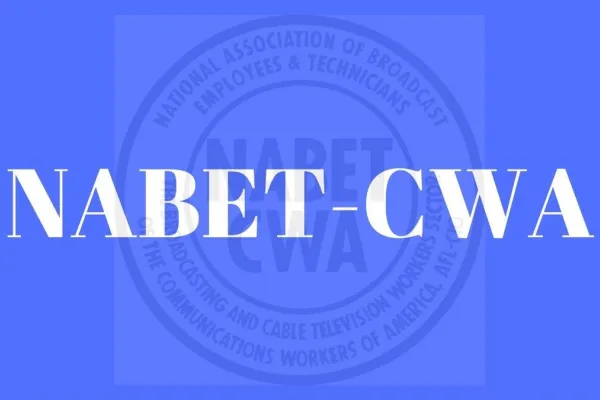After the Show

by Bill Freeda
NABET-CWA National Coordinator and President of the Media Sector, CWA Retired Members Council
The Marginalization of Retirees
In this column of “After the Show,” I want to speak to you about the attempt in this country to marginalize retirees. The Merriam-Webster Dictionary definition of “marginalize” is “to relegate to an unimportant position.”
We can begin with our elected officials, who continually refer to Social Security and Medicare as “entitlements.” There are powerful forces in this country that make these programs sound like handouts and they are not. These programs are benefits we have earned over a lifetime of working and to which we contributed our hard-earned money.
It is our job as retirees to correct our elected officials, and anyone else, when they use the term entitlement to describe Social Security and Medicare. We must speak up – politely, if possible, or not so politely, if necessary.
The real “entitlements” in this country are paid to the CEO’s of major corporations. Those entitlements are known as SERPs (Supplemental Executive Retirement Plans). These SERPs are given to those I refer to as the “kings and queens” of these corporations. I will be writing more about SERPs in an upcoming NABET News. The pension payments for former GE CEO Jack Welch are rumored to be $800,000 a month, the majority of which is a SERP. Outgoing GE CEO Jeff Immelt will receive a SERP of more than five million dollars a year, and during his tenure as CEO, the stock price and the dividend have dropped. Somehow, the GE Board of Directors has decided to reward failure. Talk about “entitlements.”
Then, we have our former employers, like AT&T, GE, and now NBCUniversal, which don’t give a second thought to breaking long-standing promises to retirees by terminating or radically reducing retiree medical benefits under the guise of giving retirees more choice.
Disappointingly, I must add CWA to this list. I am mindful that most retirees no longer pay dues, or vote in local union elections. What we do, however, is contribute to CWA-PAF, formerly known as COPE. We knock on doors, staff phone banks for labor-friendly candidates for public office, and support active employees during labor disputes. And, of course, we must continue to engage in all of those activities to support our active brothers and sisters.
The marginalization of retirees by CWA is conducted in a subtler manner. Let me share some history to illustrate. In January 2014, the CWA Executive Board passed a motion creating the GE Retiree Growth Fund. This appropriation was for approximately $471,500, and not one member of the Retired Members Council Board was asked for any input. How in the world can you create an almost half a million dollar fund for retirees without involving CWA’s retiree leaders?
Afterwards, Annie Hill, then CWA’s Secretary/Treasurer, described our omission from the process as a mistake. It was no mistake; RMC retiree leaders were deliberately bypassed and ignored.
In 2007, the RMC Board reached an agreement with the CWA Executive Board to have two joint meetings a year, one each at the Legislative and Political Conference and the Convention. That joint meeting has now been reduced to a meeting between the full RMC Board and just the CWA President and Secretary-Treasurer.
The RMC Board agreed to that change only because of the obvious lack of interest by many of the members of the CWA Executive Board. Some Vice Presidents came late, some left early, some didn’t come at all, and others appeared not to have any interest in our discussions.
The RMC’s key purposes are to organize all CWA retirees and keep them informed and engaged in the issues that affect their lives. It is my opinion that visibility is an important aspect of accomplishing that goal. When I became a member of the RMC Board in 2005, the RMC had an exclusive newsletter, Journeys. It was discontinued for a number of reasons, including the cost of mailing.
Some years after Journeys was discontinued, I received the NABET News wrapped around the CWA News. It occurred to me that it couldn’t cost much to wrap an RMC newsletter around the CWA News.
That is where my challenge began and continues. I introduced my idea of having a separate RMC print newsletter at our RMC Board meetings and presented it to the RMC’s liaisons – Helen Gibson, Melinda Gibson, Laura Reynolds – as well as Larry Cohen, Annie Hill, Chris Shelton, and Ron Collins. Thanks to Laura Reynolds, we did make some progress. We used some of the money from the Retiree Growth Fund to create a masthead and an online newsletter entitled Grey Matters. Unfortunately an online-only newsletter is not enough: it does not reach the many retirees that are not computer literate or who do not have access to a computer. More importantly, an online newsletter does not provide the visibility that I believe the RMC needs to grow.
In attempt to eliminate any additional cost to CWA, I then proposed to Chris Shelton that Grey Matters be given the back page of the CWA News. That could provide the kind of visibility RMC needs to grow. Even though we have a new administration, it seems to me my idea is still greeted with the same indifference that I received by the previous administration. At one point, I was able to convince some NewsGuild retirees to participate with the editing of Grey Matters. So much time has passed, I am not sure that capability is still available.
Retirees in this country are one of the fastest growing demographic groups. We can have a profound impact on our elected officials and corporate executives if we were united and organized, but sadly, we are not. We are divided by political philosophy, religion, and to me the most meaningless difference of all: whether a retiree worked in management or a union job. We need to put these and other differences aside if we are to flex our collective retiree muscle.
In closing, my question is: When will we ever learn?
By 2030, 20 percent of U.S. residents are projected to be aged 65 and over, compared with16.8 percent in 2020, 13.7 percent in 2012, and 9.8 percent in 1970.
—U.S. Census Bureau, “An Aging Nation: The Older Population in the United States”
As published in the Fall 2017 NABET News
NABET-CWA Bulletin: NBCUniversal/Versant (MSNBC)


